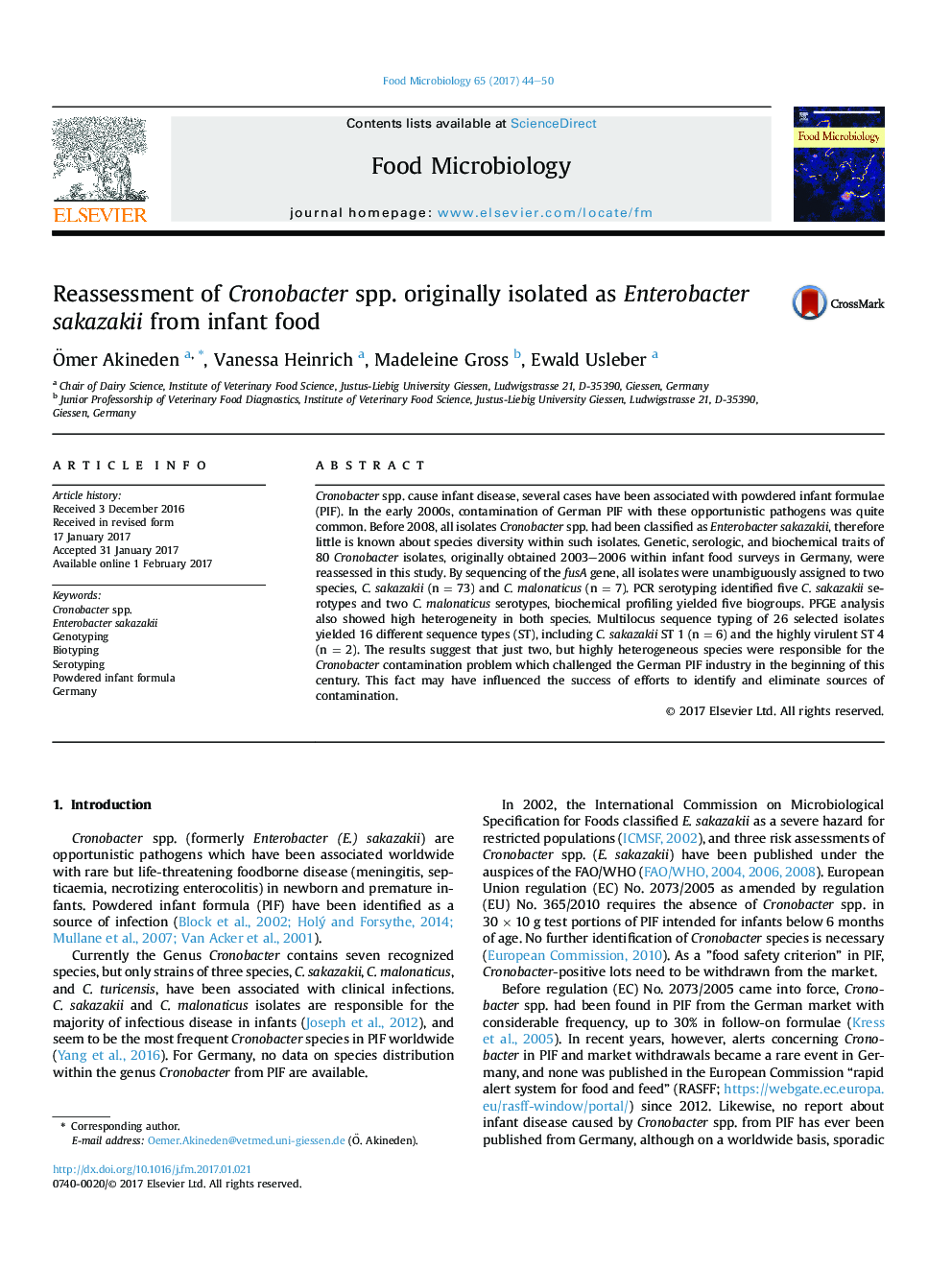| Article ID | Journal | Published Year | Pages | File Type |
|---|---|---|---|---|
| 5740127 | Food Microbiology | 2017 | 7 Pages |
â¢Retrospective, multimethod reassessment of 80 E. sakazakii isolates from infant food and assignment into Cronobacter species.â¢All isolates were either C. sakazakii or C. malonaticus, C. sakazakii was the prevailing species.â¢Authoritative species identification required analysis of the fusA gene.â¢Biotyping, serotyping, PFGE, and MLST showed high within-species heterogeneity.â¢C. sakazakii clonal complex 4 (ST4 and ST108) was identified for some isolates.
Cronobacter spp. cause infant disease, several cases have been associated with powdered infant formulae (PIF). In the early 2000s, contamination of German PIF with these opportunistic pathogens was quite common. Before 2008, all isolates Cronobacter spp. had been classified as Enterobacter sakazakii, therefore little is known about species diversity within such isolates. Genetic, serologic, and biochemical traits of 80 Cronobacter isolates, originally obtained 2003-2006 within infant food surveys in Germany, were reassessed in this study. By sequencing of the fusA gene, all isolates were unambiguously assigned to two species, C. sakazakii (n = 73) and C. malonaticus (n = 7). PCR serotyping identified five C. sakazakii serotypes and two C. malonaticus serotypes, biochemical profiling yielded five biogroups. PFGE analysis also showed high heterogeneity in both species. Multilocus sequence typing of 26 selected isolates yielded 16 different sequence types (ST), including C. sakazakii ST 1 (n = 6) and the highly virulent ST 4 (n = 2). The results suggest that just two, but highly heterogeneous species were responsible for the Cronobacter contamination problem which challenged the German PIF industry in the beginning of this century. This fact may have influenced the success of efforts to identify and eliminate sources of contamination.
